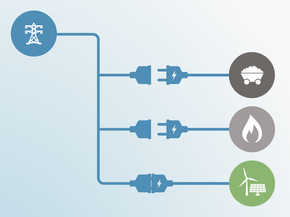Assumptions
Historical emissions
The Gambia’s historical emissions are based on the 2010 GHG emissions reported by The Gambia’s Third National Communication (Republic of The Gambia, 2020). We have completed the time series from 1990-2019 using growth rates from PRIMAP (Gütschow et al., 2021). We consider the government reported data to be the most up to date estimate available and so use it as a starting point, rather than simply using the entire PRIMAP data set. Our estimates are about 0.5MtCO2e higher than PRIMAP.
2020-2021 estimates
To estimate historic emissions in 2020-2021, we first derived individual gas estimates for 2019 using the ratios for CO2, CH4, and N2O in PRIMAP. As PRIMAP did not provide data for F-gases, we estimated F-gas emissions in 2019 using the ratio of CH4 to F-gases in the US EPA’s non-CO2 projections (U.S. Environmental Protection Agency, 2019).
To estimate CO2 emissions, we used the growth rate from the Global Carbon Budget (Global Carbon Project, 2022) for 2020 and GDP growth rate for 2021 (IMF, 2022). For CH4 and N2O, we extended the series from 2019-2021 using the 5-year trend from 2015-2019. For F-gases, we applied the GDP growth rate for 2020 and 2021 to approximate the impact of COVID-19 on the industry (IMF, 2022).
NDC and other targets
NDC target values are calculated based on the conditional and unconditional mitigation actions and their estimated impact in The Gambia’s NDC submitted in 2021 (Republic of The Gambia, 2021a). The Gambia’s NDC includes information on the extent to which the land sector is included in its 2030 BAU as well as the extent to which it intends to rely on that sector to meet its conditional and unconditional targets. We have excluded these emissions from our calculations.
Current policy projections
The lower bound of our current policy projection assumes that GHG emissions will grow according to the 5-year trend extension (2015-2019). We have not accounted for any potential policy measures The Gambia has proposed due to a lack of data regarding the status of their implementation and thus were not able to create a policy projection based on the updated business as usual (BAU) projection provided in The Gambia’s 2021 NDC (Republic of The Gambia, 2021a).
The upper bound of our current policy projection uses the growth rates from the IEA’s Africa Energy Outlook 2019 Stated Policies Scenario for CO2 emissions and the US EPA’s growth rates for non-CO2 emissions (IEA, 2019; U.S. Environmental Protection Agency, 2019). The AEO SPS covers the entire continent. We were not able to find any estimates for The Gambia specifically and thus used the AEO SPS as a proxy.
Global Warming Potential
The CAT uses Global Warming Potential (GWP) values from the IPCC's Fourth Assessment Report (AR4) for all its figures and time series. Assessments completed prior to December 2018 (COP24) used GWP values from the Second Assessment Report (SAR).
Further analysis
Latest publications
Stay informed
Subscribe to our newsletter






